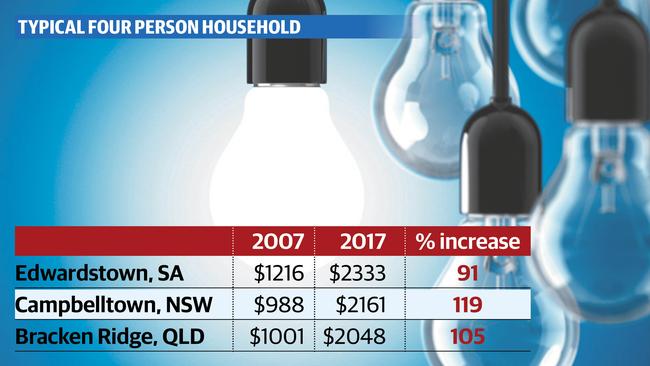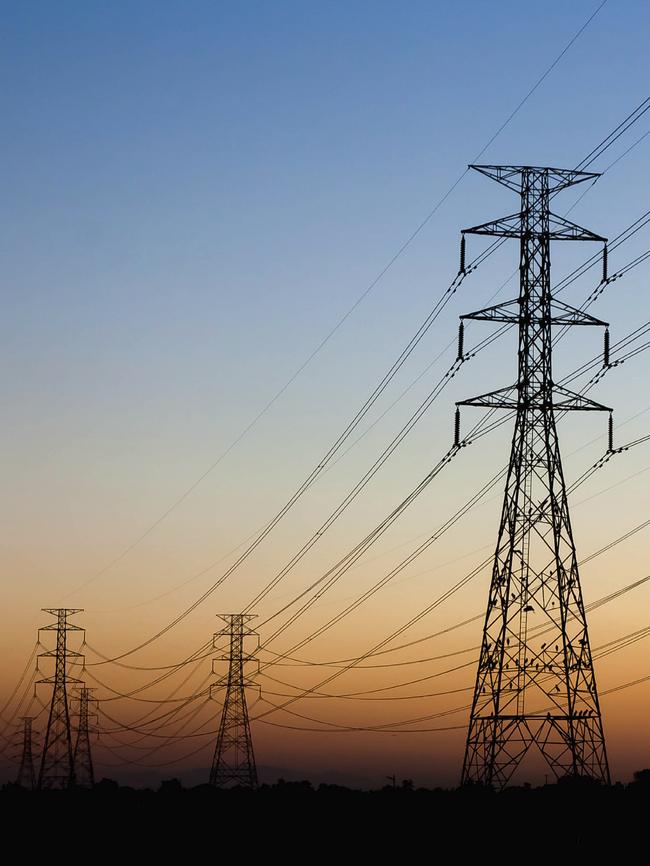SA Power Networks under ‘no obligation’ to pay compensation for 60,000 customers who lost power unnecessarily
TYPICAL SA families will pay the highest power bills in the country this year, new modelling shows, as SA Power Networks insisted it was under “no obligation” to pay compensation for its blackout bungle.
SA News
Don't miss out on the headlines from SA News. Followed categories will be added to My News.
- SA Power Networks sorry after computer error blacked out 60,000
- Deliberate power cuts to 90,000 as SA swelters
- Blame game over rolling blackouts
- Analysis: No easy fix to SA’s power crisis
- People angry and frustrated by power cuts
TYPICAL South Australian families will pay the highest power bills in the country this year, new modelling shows, as SA Power Networks insisted it was under “no obligation” to pay compensation for its blackout bungle.
A Federal Government analysis of electricity costs for a family of four living in a three-bedroom home showed their annual bill had soared by about 90 per cent in the last decade.
Using an average home in the working-class suburb of Edwardstown, the modelling estimated bills would rise to $2333 this year, up from $1216 in 2007.

But, on a percentage basis, the rise was smaller than in similar suburbs interstate.
The analysis comes as an SAPN spokesman said the 60,000 households and businesses accidentally blacked out by a software glitch in last week’s blistering heat should apply for payments from insurers.
“We believe there is no obligation for us to provide compensation in these circumstances,” the spokesman told The Advertiser.

“We appreciate load shedding, which lasted 31 minutes on average, may have caused some difficulty for some business customers.
“We encourage them to contact their insurer in case of financial loss.”
A report released by the Australian Energy Market Operator on Wednesday revealed SAPN load shed three times as much power than it was directed to.
That led SAPN to publicly apologise for an error it said was due to malfunctioning software that blacked out a total 90,000 customers.
Both sides of state politics said residents and businesses were right to be furious, and feel entitled to compensation for another blackout they should not have suffered through.
A leading Adelaide law firm also said it raised concerns of “negligence”.
Treasurer Tom Koutsantonis said it appeared a “cosy deal” struck when SAPN, formerly ETSA, was privatised left customers without the ability to make it “pay the price” for the error.
Tindall Gask Bentley Lawyers partner Tim White said the discovery that a software glitch contributed to last week’s blackout raised the issue of negligence.
“However, it is difficult to say any more at this stage because it remains unclear who was ultimately responsible for the blackout and other factors,” he said.
“In situations like this a proposal for a class action may be the only practical way to proceed, depending on how individuals and or businesses were specifically affected.”
Australian Energy Council chief executive Matthew Warren said the AEMO blackout report released this week “has again highlighted the fragility of the state’s electricity grid”.
“The events of last week remind us that SA’s grid regularly operates on a knife edge and requires everything to go right to avoid blackouts,” Mr Warren said.
“AEMO’s report highlights the very real challenges of accurately forecasting supply and demand, particularly at times of extreme weather and in a grid with high levels of intermittent generation.
“When a high proportion of your generation comes from wind, accurate forecasting becomes increasingly critical.”
Meanwhile, Prime Minister Malcolm Turnbull intensified attacks on Labor’s “incoherent” and “rubbish” energy policy, seizing on suggestions the Opposition had walked away from its 50 per cent renewables target.
Energy Minister Josh Frydenberg said: “Labor still has no idea what its policy on renewables actually is.”
Listing different terms Labor MPs have used to describe their policy, Mr Frydenberg said it was increasingly unclear whether Labor’s talk of 50 per cent renewable energy was an “aspiration”, a “goal”, an “ambition”, an “objective”, a “policy framework” or a “target”.
Opposition energy spokesman Mark Butler said Labor’s “target” of 50 per cent renewable energy by 2030 would be driven by an emissions intensity scheme.
“We have always been perfectly clear about the fact we aren’t proposing to extend the Large Scale Renewable Energy Target retailer obligation mechanism (current legislated policy) to meet our 50 per cent target,” he said.


